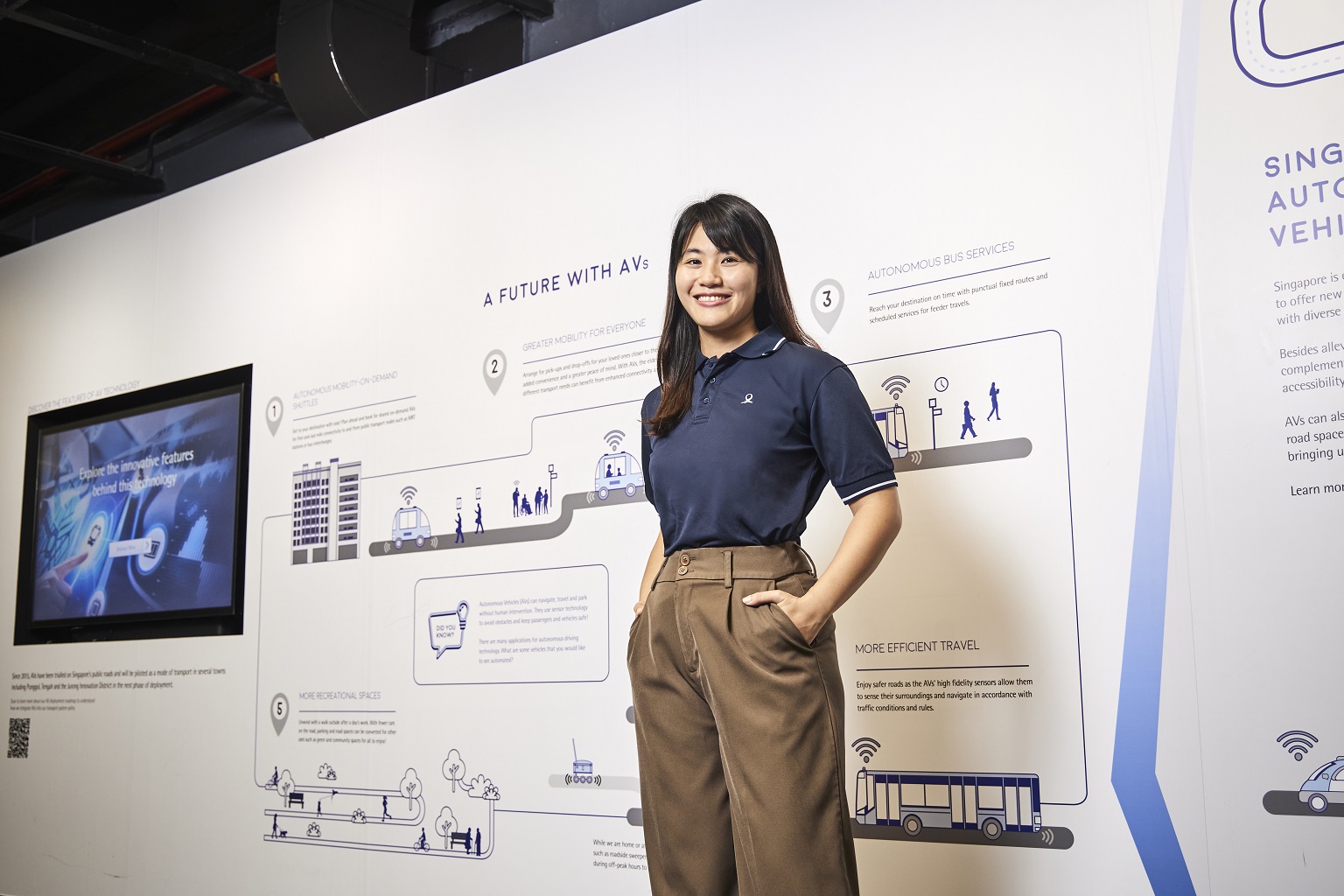
Under the hot sun, Low Shin Yun watched a bus approach the testing ground. But something was different about this vehicle: No one was driving it.
Suddenly, a test dummy swung into its path. The bus braked, coming to a complete stop before any collision occurred.
This was just another day at the Centre of Excellence for Testing and Research of Autonomous Vehicles – NTU (CETRAN), where Shin Yun’s work ensured autonomous vehicles (AVs) could be safely deployed.
“It was a far cry from the office work I had imagined, but it opened my eyes to Land Transport Authority’s (LTA) forward-thinking approach and commitment to innovation,” says the LTA scholar. Her first stint with the organisation was in its Vehicle Technology and Standards (Autonomous Vehicles) division.
Shin Yun led LTA’s AV Milestone Testing Regime, a critical framework that puts public safety first in automous vehicle trials.
Her work has contributed to the real-life deployment of autonomous shuttles at One-North, National University of Singapore and Gardens by the Bay. Ensuring public safety through thorough testing is a key part of the process.
“Before the shuttles are put on public roads and paths, we have to test each of them,” she explains. She received the LTA Undergraduate Scholarship in 2014 to pursue her studies in mechanical engineering and business administration at the National University of Singapore.
“The scholarship isn’t just a career path; it is a gateway to making a real difference in my country’s development,” she adds.
Shin Yun is also looking into the use of driverless vehicles as a last-mile mode of transport in Singapore’s neighbourhoods.
Even as the public transport network continues to grow, these AVs could help people travel between their homes and the nearest bus stop or train station more easily. While the public transport network continues to grow, these AVs can solve an important challenge: Helping people travel between their homes and the nearest bus stop or train station more easily.
As an example, Shin Yun brings up her own grandmother, who has mobility issues. “The journey from home to the bus stop can be challenging. Currently, the only option is private transport,“ she says. Autonomous shuttles right at the doorstep will help to improve connectivity and enhance the quality of life for Singaporeans.
AVs can also be used as road-sweepers and parcel delivery vehicles, which may be deployed at night to reduce road congestion and conserve manpower.
As a scholar, she was given the opportunity to be exposed to LTA’s diverse functions. The 6,000-strong organisation’s responsibilities extend beyond public transport to include road maintenance, traffic management, active mobility, infrastructure oversight and more.
Over her six-year career with the organisation, Shin Yun transitioned from the AV division to fare systems, before taking on her current role as senior engineer in the Robotic Process Automation (RPA) department, where she helps colleagues automate manual, repetitive and rule-based tasks and processes.
“LTA’s work touches virtually every Singaporean daily, which is incredibly inspiring to me.”
– Low Shin Yun, recipient of the LTA Undergraduate Scholarship
In one project, the 30-year-old addressed a daily challenge her LTA colleagues struggled with: Managing thousands of feedback.
By developing a software robot which uses keywords to classify feedback, it automated the routing of 70 per cent of the group’s inbox to the correct personnel.
This innovation has transformed how LTA handles public feedback. Staff now spend less time sorting through messages and more time addressing the feedback itself. The public, in turn, receives faster responses to their feedback.
This role has pushed Shin Yun beyond her mechanical engineering background into the world of coding and software development. “We get quite a lot of thanks from colleagues because we have alleviated some of their workload,” she says.
For her, it is another way to play a part in improving the public transport experience.
“LTA’s work touches virtually every Singaporean daily, which is incredibly inspiring to me,” she says.